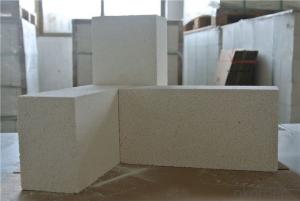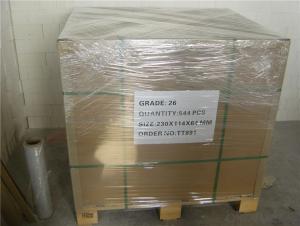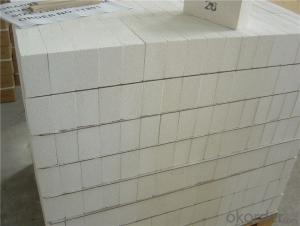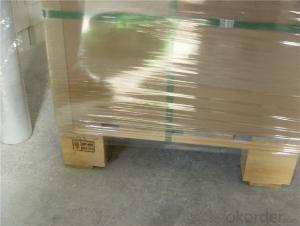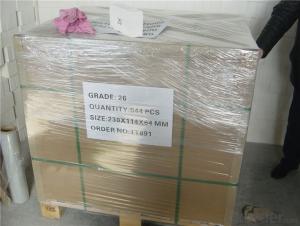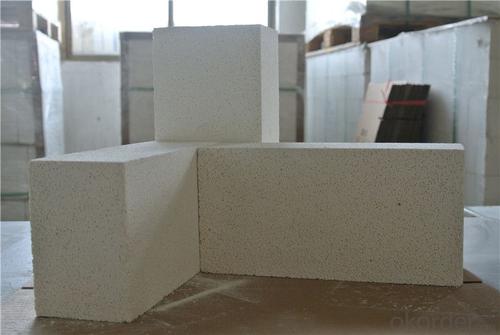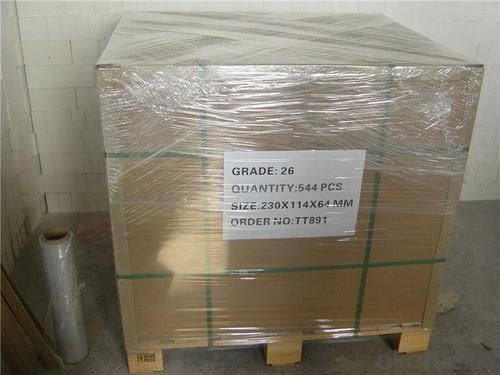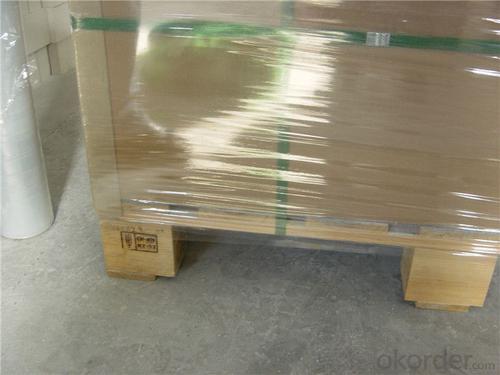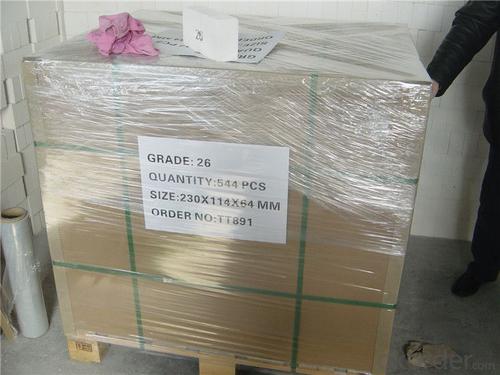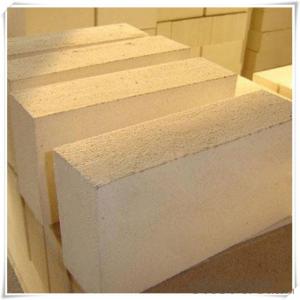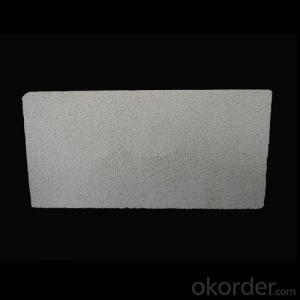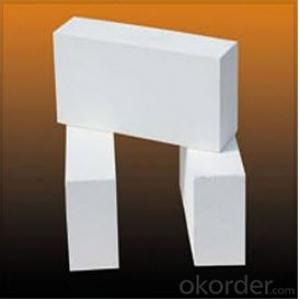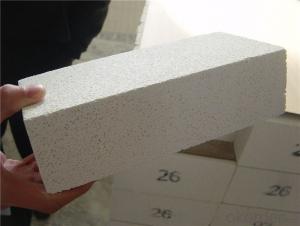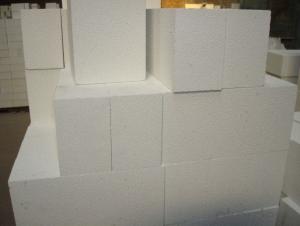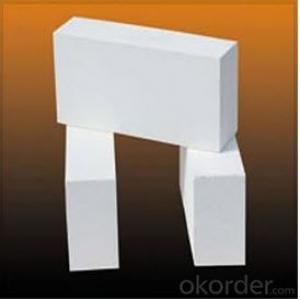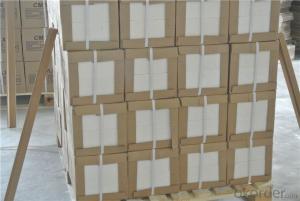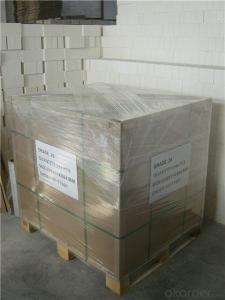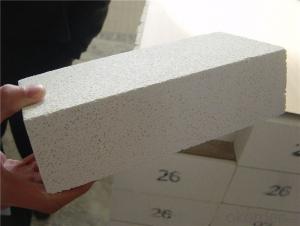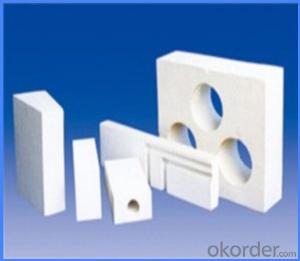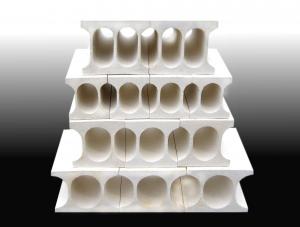Insulating Fire Brick - Refractory Lightweight Insulation Fire Clay Brick for Heating Furnace
- Loading Port:
- Shanghai
- Payment Terms:
- TT OR LC
- Min Order Qty:
- 1 m.t.
- Supply Capability:
- 1000 m.t./month
OKorder Service Pledge
OKorder Financial Service
You Might Also Like
Thermal Insulation Fire Clay Brick
Refractory brick is a block of refractory ceramic material used in lining furnaces, kilns, fireboxes, and fireplaces.
We provide high quality Refractory Fire Bricks that are used on wide range in the various industries like Cement, Glass and Steel. Refractory Fire Bricks are provided as per the quantity and specifications required by the customers. We provide an extensive range of Refractory Fire Bricks at reasonable prices that depend upon the quantity ordered.
Application
Insulating Fire Brick are used for the lining of converter, alternating current arc furnace, direct Current arc furnace and the ladle slag line, etc.
Company Advantage
(1)Long Insulating Fire Brick manufacture history: 25 years manufacturer
(2)Advanced equipment
(3)Diversification of production standards: ISO ANSI FEPA JIS ASTM
(4)Flexible payment: T/T L/C D/P D/A
(5)Professional marketing team and after-sale service
Insulating Fire Brick main feature:
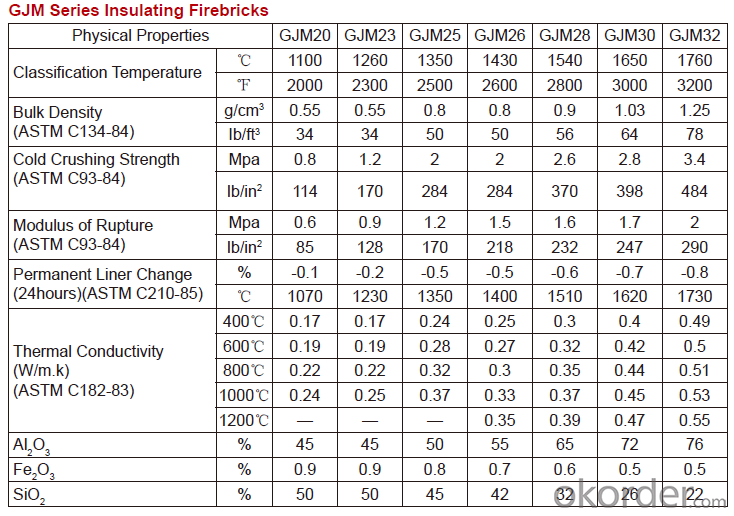
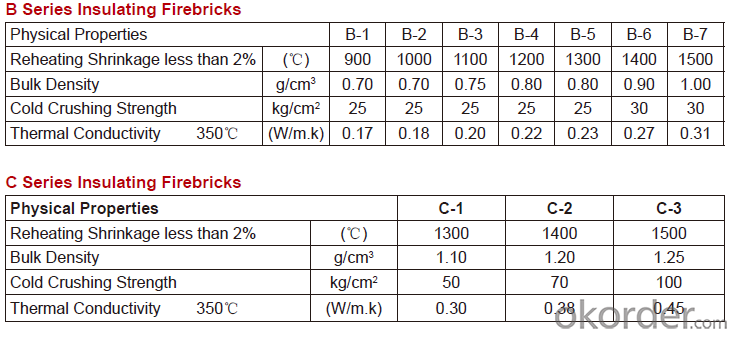
Equipment
1 unit of Ceramic Abrasive (SG Abrasive) pilot production line
2 units of Compact grain Abrasive pilot production lines
1 unit of high-end coated abrasives (abrasive cloth) production line
2 units of Boron Carbide production lines
3 large flexible crushing and sieving lines for grit production lines
6 units of 5000KVA-10000KVA dumping type electric arc furnaces for Brown Fused Alumina fusion
Q1 What’s the transport method?
A1 FCL delivery goods with wooden pallet or wooden case by sea; If LCL delivery, must with wooden case; Sometimes need open top, flat rack or bulk cargo.
Q2 What’s the required payment term?
A2 Generally 30% TT as the prepayment, 70% TT before delivery. If need, 100% Irrevocable Letter of Credit or negotiation.
Q3 Which country are our products exported to?
A3 Apart from entire Chinese market, the US, Russia, Japan, Korea, Australia and some Southeast Asian Nations.
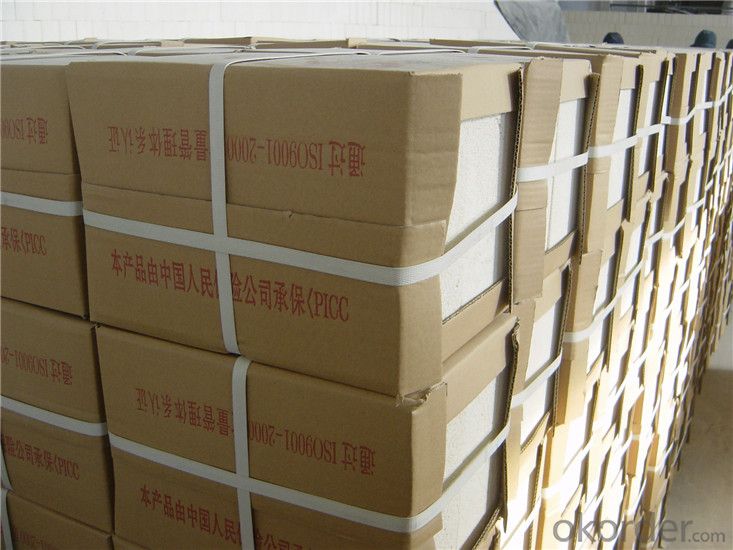
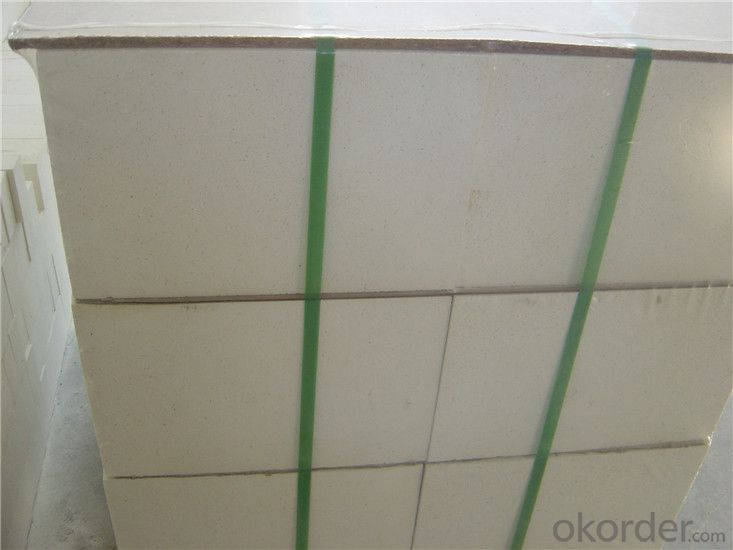
- Q: Can insulating fire bricks be used in boilers for steam generation?
- Yes, insulating fire bricks can be used in boilers for steam generation. Insulating fire bricks are made from lightweight materials that have high insulating properties, such as ceramic fibers or expanded clay. These bricks are designed to have low thermal conductivity, which means they are excellent at preventing heat transfer. In boilers, the insulation is crucial to reduce heat loss and improve energy efficiency. Insulating fire bricks can be used to line the walls, roof, and floor of the boiler combustion chamber. By providing a highly insulating barrier, they help to retain heat within the combustion chamber, allowing for more efficient steam generation. Furthermore, insulating fire bricks can withstand high temperatures, making them suitable for use in boilers where steam generation involves elevated temperatures. They are also resistant to thermal shock, which is important in boilers where temperature fluctuations can occur. Overall, insulating fire bricks are a valuable choice for boiler applications as they provide excellent insulation, withstand high temperatures, and contribute to improved energy efficiency in steam generation.
- Q: Is it possible to paint or coat insulating fire bricks?
- Indeed, it is feasible to apply paint or coat insulating fire bricks. Nevertheless, it is imperative to utilize a type of paint or coating that can endure elevated temperatures, given that insulating fire bricks are intended for usage in exceedingly hot surroundings. Ordinary paint or coatings may not be appropriate since they can combust or deteriorate under high temperatures. It is advisable to employ specialized high temperature paint or coatings that have been specifically formulated to withstand the intense heat of insulating fire bricks. Typically, these types of paint or coatings possess a resistance to high temperatures of several hundred degrees Celsius or greater. Moreover, it is crucial to adequately clean and prepare the surface of the bricks prior to applying any paint or coating to ensure optimal adhesion and durability.
- Q: Can insulating fire bricks be used in the construction of pottery kiln shelves?
- Yes, insulating fire bricks can be used in the construction of pottery kiln shelves. These bricks are specifically designed to withstand high temperatures, making them suitable for use in kilns. They provide excellent insulation, helping to maintain consistent heat distribution throughout the kiln and ensuring optimal firing conditions for pottery.
- Q: Can insulating fire bricks be used in the construction of ceramic fiber kilns?
- In the construction of ceramic fiber kilns, insulating fire bricks can indeed be utilized. These bricks are specifically designed to offer thermal insulation and minimize heat loss in high-temperature situations. Their exceptional insulating properties, characterized by low thermal conductivity, render them extremely suitable for maintaining elevated temperatures in kilns. The incorporation of insulating fire bricks in ceramic fiber kiln construction has the potential to heighten the kiln's overall energy efficiency and enhance its performance. However, it is crucial to guarantee that the insulating fire bricks selected align with the particular requirements and operating conditions of the ceramic fiber kiln to achieve optimal outcomes.
- Q: Are insulating fire bricks suitable for thermal insulation in boilers?
- Yes, insulating fire bricks are suitable for thermal insulation in boilers. They have high thermal conductivity and can withstand high temperatures, making them an effective choice for insulating the walls and floors of boilers. Their ability to retain heat helps in improving energy efficiency and reducing heat loss, ultimately enhancing the overall performance of the boiler system.
- Q: How do insulating fire bricks affect the overall indoor air quality of a building?
- Insulating fire bricks have a positive impact on the overall indoor air quality of a building. These bricks are designed to resist high temperatures and prevent heat transfer, which helps in maintaining a comfortable and consistent indoor temperature. By improving thermal insulation, they reduce the need for excessive use of heating and cooling systems, thereby minimizing the release of pollutants and improving energy efficiency. Additionally, insulating fire bricks are non-combustible, meaning they do not emit harmful gases or particulate matter when exposed to heat. This further contributes to a healthier indoor environment by reducing the potential for air pollution and respiratory issues.
- Q: Are insulating fire bricks suitable for use in the construction of smelters?
- Yes, insulating fire bricks are suitable for use in the construction of smelters. Insulating fire bricks are designed to withstand high temperatures and provide excellent insulation properties, making them ideal for applications such as smelters. They have low thermal conductivity, meaning they can effectively retain heat and reduce energy loss during the smelting process. Additionally, insulating fire bricks are resistant to thermal shock, which is crucial in smelting operations where rapid temperature changes are common. Their high heat resistance and insulation capabilities make insulating fire bricks a reliable choice for constructing smelters.
- Q: Can insulating fire bricks be used in the construction of boilers for steam generation?
- Yes, insulating fire bricks can be used in the construction of boilers for steam generation. Insulating fire bricks are designed to have low thermal conductivity, which helps to minimize heat loss and improve the overall energy efficiency of the boiler. They are commonly used in the construction of boiler walls, floors, and furnace linings as they can withstand high temperatures and provide excellent insulation properties. By using insulating fire bricks in the construction of boilers, the heat generated by burning fuel can be effectively contained and transferred to the water, resulting in efficient steam generation.
- Q: Are insulating fire bricks suitable for use in carbon black furnaces?
- Yes, insulating fire bricks are suitable for use in carbon black furnaces. Insulating fire bricks are made from refractory materials that have excellent insulation properties, which makes them ideal for high-temperature applications such as carbon black furnaces. Carbon black furnaces operate at extremely high temperatures, typically above 1,000 degrees Celsius, and the use of insulating fire bricks helps to reduce heat loss and improve energy efficiency. These bricks also have good thermal shock resistance, which is crucial for the cyclic heating and cooling that occurs in the furnace. Additionally, insulating fire bricks have low thermal conductivity, which helps to maintain a stable temperature inside the furnace and prevent excessive heat loss. Overall, insulating fire bricks are a reliable and effective choice for lining carbon black furnaces.
- Q: Can insulating fire bricks be used in lime plants?
- Yes, insulating fire bricks can be used in lime plants. They are commonly used in high-temperature applications, such as lime kilns, to provide thermal insulation and reduce heat loss. Insulating fire bricks help maintain consistent and efficient heat distribution, which is essential for the lime production process.
Send your message to us
Insulating Fire Brick - Refractory Lightweight Insulation Fire Clay Brick for Heating Furnace
- Loading Port:
- Shanghai
- Payment Terms:
- TT OR LC
- Min Order Qty:
- 1 m.t.
- Supply Capability:
- 1000 m.t./month
OKorder Service Pledge
OKorder Financial Service
Similar products
Hot products
Hot Searches
Related keywords
